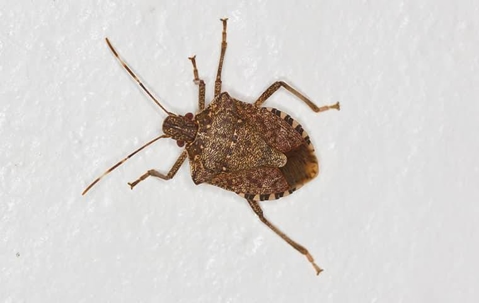Fact About Stink Bugs
Today, there’s an invasion occurring. Originally hailing from Asia, the stinkbug is steadily marching its way through Pennsylvania and Ohio. Although these small insects won’t bite you, they do pose a significant threat to your crops, your garden plants–and, if frightened, your nose. These occasional invaders can be pesky to deal with.
- Most stink bugs only eat plants. They feed on and damage both ornamental plants and crops that we depend on. However, some may eat other insects like caterpillars or beetles which are typically found in plants. Rarely though, some stink bugs may resort to eating other stink bugs.
- Stink bugs are shaped like a shield with white bands on their antennas. They are colored brown when viewed from above, and their underside is typically a creamy brown.
- Although they are bothersome and a nuisance to humans, they do not sting or bite.
- Until two years ago, they had no known predator. In 2017, however, it was discovered that the samurai wasp is a predator. “They lay their eggs inside the stink bug eggs and then their larvae feed on what was inside the eggs and they emerge instead of stink bugs. So they essentially kill the stink bug before it even hatches,” said Hillary Peterson, insect expert and Penn State PhD student, in an interview with WHIOTV 7's sister station WPXI.
- They originated in Asia, but made their way to the US and into Allentown, PA, eventually invading Ohio. Which is why we can enjoy their presence today.
- While stink bugs do not cause any harm, they are annoying and when threatened or smashed, they smell. The smell, which has been described as an odorous foot, is actually a defense mechanism.
- Stink bugs feature piercing and sucking mouthparts and clear wings that harden at the base of the shell (or “shield”).
- They range in size from 0.5 to 2 inches long.
Stink Bug Prevention Tips
Stink bug search for tasty crops meant for human consumption to lay their eggs and feed on. Which is why your indoor stink bug prevention regime begins outdoors. Here are some environmentally sound tips for keeping them at bay both inside and outside of your home:
Outdoor Stink Bug Prevention
- Be watchful for larvae on garden leaves. Promptly remove them and discard them if they are found.
- If adult insects are present, shake the leaves and allow the bugs to fall into a bucket of soapy water. They will not be able to fly out.
- Plant sunflowers away from garden areas. Stink bugs are highly attracted to them.
- Use row covers to prevent them from landing on plants.
- Keep outdoor lighting to a minimum. Stink bugs are attracted to light.
- Fall preventative service helps to reduce infestation indoors.
Indoor Stink Bug Prevention
- Seal all cracks and crevices in your home with caulking. Stinkbugs can enter through the tiny space around window-unit air conditioners.
- Keep the stripping around your windows, chimneys, and AC units in good repair.
- Replace exterior rotted wood.
- Minimize the number of lights left on at night by your windows.
- If you sweep them up with a vacuum cleaner, immediately dispose of the bag.
If stink bugs have managed to slip past your line of defense, it is not recommended to use an insecticide such as spray or dust. Although this sounds like a quick fix to the problem another pest control problem may arise. Carpet beetles and mites that feed on the carcasses may become an issue. It is recommended if you see one, capture it & flush it. Smashing it will release the very unpleasant odor it’s known for. If you have several stink bugs, vacuum them up and discard the vacuum bag immediately.
TermiPest+ Total Home Protection
Do you know about Epcon Lane’s new TermiPest+Total Home Protection Program? We’ll provide you with early detection as well as prevention from pesky pests. Features include:
- Cobweb dusting and removal from your basement and house exterior.
- Hepa-vac removal of dead insects including spiders, millipedes & earwigs.
- B&G TM1 termite monitoring and bait stations. These provide early termite detection.
- Exterior insect, termite, and rodent control.
- RTU mouse stations to provide interior protection from mice.
- Convenient service times!
- Pest problems in between scheduled service? No worries! There is no charge for additional service.
As always, concern for our environment and your family is our #1 priority. Using our TermiPest+ Total Home Protection Program, you can protect your homes and businesses in Ohio and be gentle on our planet while 50+ pests steer clear of your home! Contact us today and find out how to get started!

